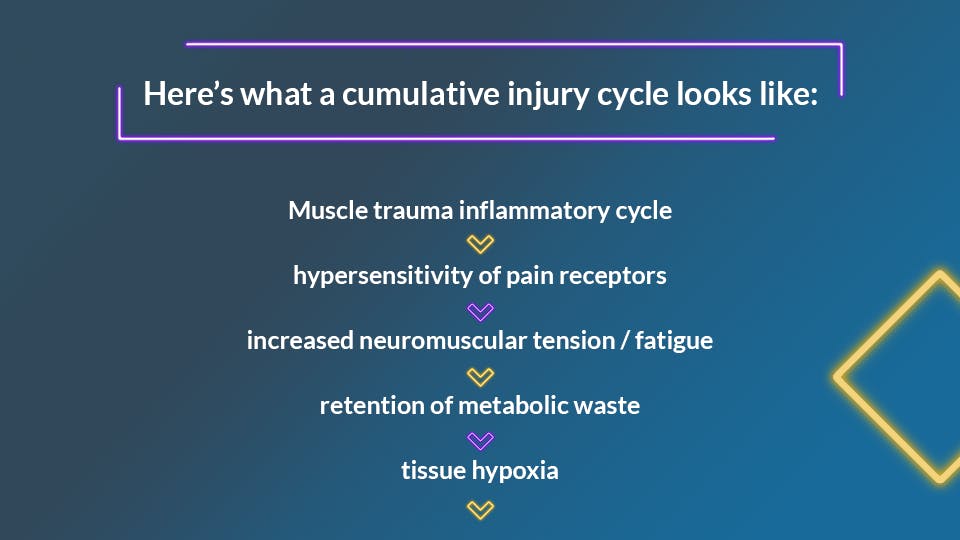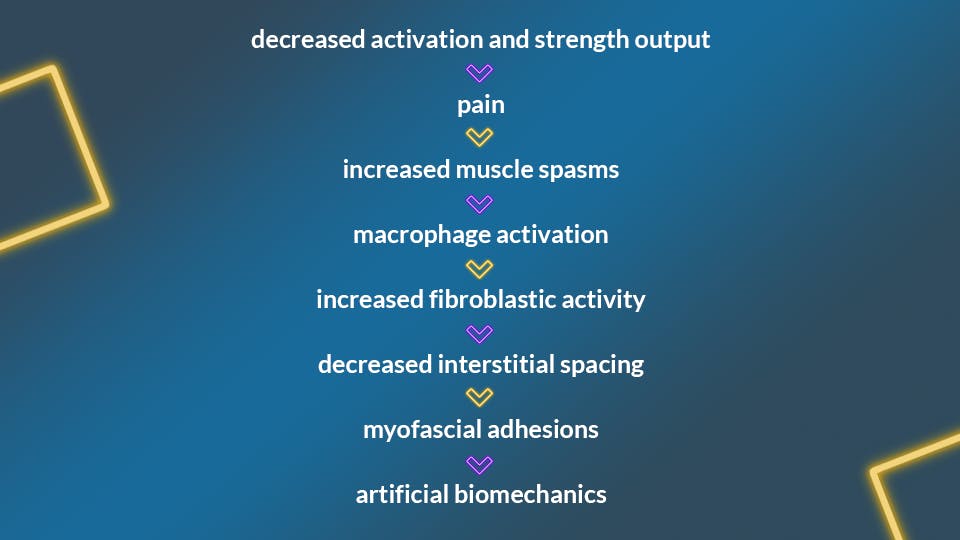How to Fix Kinetic Chain Imbalances
Golf is a highly complex sport, requiring high levels of mental acuity and physical speed—not to mention its potential wear and tear on the body throughout the entire kinetic chain. To further complicate matters, golfers rarely understand the connection between the kinetic chain and all the moving parts of golf—their bodies, the right equipment, the proper habits and routines, and data-based performance analysis. Integrity Golf Performance is here to create some order in the chaos, help you identify potential imbalances in your kinetic chain, and give tips on safely becoming a high-performance golfer.

The Kinetic Chain and Your Body
Let’s start with the basics: what is the kinetic chain, and why is it so important?
Optimal posture and alignment provide structural and functional efficiency to the kinetic chain for golf and are fundamental to good health. Movements of the kinetic chain are predictable using anatomical, biomechanical, and structural concepts. Summations of individual motion segments create predictable patterns of motion, which are all controlled by the central nervous system (CNS/brain).
Here are the elements of a kinetic chain:
- Myofascial system (muscle and connective tissues)
→ articular system (joints and surrounding tissues)
→ neural system (brain, spinal cord, nerves) - Sensorimotor integration (sorts information from all three systems to coordinate motion)
- Neuromuscular control
Neuromuscular control helps the entire kinetic chain maintain structural integrity, facilitating optimum alignment patterns.
Optimum neuromuscular control hinges on proper muscle length-tension relationships and on muscle “force couple” relationships (when muscles on opposite sides of a joint work together), establishing and maintaining proper joint kinematics.
Muscles are designed to be at optimum lengths. That gives them the capacity to develop maximal tension. However, if the muscles are shortened or lengthened beyond their optimum lengths, the amount of tension they can generate decreases.
The brain is designed to optimize the use of muscles to produce movement. Muscles work as “force couples” to produce force, dynamically stabilize force, and reduce force efficiently across three dimensions.

Essentially, the kinetic chain depends on two things:
- Structural efficiency—alignment of the musculoskeletal system that allows posture to be balanced over the center of mass during P1 to P10.
- Functional efficiency—the neuromuscular system’s ability to perform basic and dynamic tasks like the golf swing with the least amount of energy, putting the least amount of stress and strain on the kinetic chain.
However, if one component is out of alignment and length-tension relationships are off, it creates both predictable and unpredictable patterns of muscle overload and joint dysfunction and initiates a cumulative injury cycle.
If we haven’t already stressed it enough, muscle balance is extremely important for golfers!
(Read more in our article about how Muscle Fitness Makes Better Golfers.)


The cumulative injury cycle happens because of poor kinetic chain performance. Misalignment initiates a chain reaction; distorting forces are applied to the kinetic chain above and below the misaligned, imbalanced area. For example, addressing the ball with an anterior pelvic tilt (with your hips tilted too far forward) and a rotational force can lead to lower back pain.
Now that we’ve established how vital muscle balance is, let’s move on to the clubhead and discover its connection to the kinetic chain.
The Kinetic Chain and Your Clubhead
Currently, everyone’s interested in increasing clubhead speed. The problem is not in seeking higher clubhead speed, but in the strategy a golfer implements to achieve gains.
There are several speed tools on the market; all work to varying degrees. At Integrity Golf Performance, we use Mach 3 Speed Training tools. But no matter the tool used, the principles for achieving higher speed are not new.
What is new is a more logical method of achieving clubhead speed in a safe, sustainable way—believe us, we’ve seen our share of injuries and long-term damage when people try a strategy without professional guidance.
Pro Tip: We’re aiming for efficient speed, not excessive effort.

This is important, because trying harder doesn’t always produce the correct result. It usually results in using all the wrong muscles and developing new, artificial behaviors. We want to prevent that at all costs.
So how do you develop efficient speed habits?
When we tell our bodies and brains to take certain actions, they will comply, even if they do so incorrectly. We’re grateful for our brains, but our aim is to teach golfers good habits, not habits created by default.
Do it your way, and the result will likely be poor force-absorption, poor weight-acceptance, and poor force-transference during the transitional phases from the backswing to the downswing to the impact and to the follow-through.
Generally, most golfers have healthy spines, hips, knees, and shoulders. Their problems relate to poor muscle function. Poor muscle function redirects stress to areas of frequent motion like the neck, elbow, wrist, back, hip, and knee.
Additionally, most golfers do not have proper, golf-specific training routines. Some work out at home or with a personal trainer on traditional strengthening exercises. Still, for the most part, no biomechanical data is involved in their training to empirically evaluate their strengths and weaknesses.

Data helps us to understand if the kinetic chain is working as it should.
A golfer may be strong or conditioned yet not utilize their kinetic chain (from a golf-specific standpoint) to create neuromuscular efficiency; therefore, they would struggle to produce consistent clubhead speed. Their contact, power, and curve potential would not be where they desired them to be.
Functional strengthening differs from traditional strengthening commonly done in most gym settings. Although traditional strengthening is still necessary to develop functional strength, without the needed strength/stabilization, a golfer will be very inefficient.
Becoming a High-Performance Golfer
At Integrity Golf Performance, we take your golf performance seriously, and the health of your kinetic chain is vital to your game.
During a biomechanical assessment, we can identify the specific strengths and weaknesses that impact your golf swing.
The good news is that any weakness or imbalance we discover is trainable (reversible). It takes dedication, self-discipline, and time to create good habits that will allow you to play golf long after your golfing buddies have laid down their clubs.
No matter how many years you have played without professional guidance, and even if you are already paying the price for it, a solution exists. We can correct kinetic chain imbalances through specialized flexibility and strengthening exercises and improve body mechanics for efficient speed patterns.
There is a way to play high-level golf and feel great while doing so!
Contact us today for an assessment, and discover how you can improve your golf performance.

Are you ready to improve your game?
Book your assessment today by clicking the button below. We'll call you to schedule your visit.
